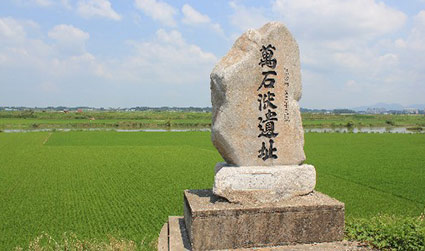
Jeon Bong-jun occupied Gobu Gwana with about 1,000 peasant troops.
Donghak Peasant Army, all-out gunfire at Mujang (1st uprising)
Establishment of Honam Changuidae site in Baeksan (about 8,000 southern peasants)
- Commander-in-Chief Jeon Bong-Jun, deputy commanders Son Hwa-Jung and Kim Gae-Nam were appointed
- The proclamation of Gyeokmun and the 4 major names, 12 rules of discipline
After defeating the Jeolla Gamyeong Army in Hwangtohyeon, the peasants occupied Gwana in Jeongeup.
* The Gyeonggun of Hong Gye-hoon, who was a Yangho Chotosa, entered Jeonju-seong(Jeonju Fortress).
Occupying the southwest coast of Jeolla-do (Heungdeok, Mujang, Yeonggwang, Hampyeong)
Won the first battle with Gyeonggun at Hwangryongchon, Jangseong
Entered the Capital of Honam, Jeonju Fortress
In the 2nd and 3rd close battle with Gyeonggun at Jeonju-seong, the peasants were defeated
Qing Army landed in Asan Bay
Japanese army landed at Incheon Port
Southern Peasants' Army and Gyeonggun in Jeonju signed the joint Agreement on the establishment of a Jipgangso in the 53 counties of Jeolla-do and the dissolution of the peasant army
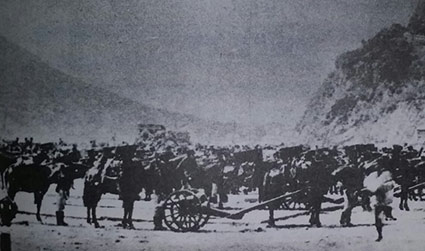
Japanese forces invaded Gyeongbokgung Palace in Joseon
Qing army and Japanese army engaged in Seonghwan
Japanese Army declared war, became Sino-Japanese War
Meeting held in Jeonju between Jeon Bong-jun and Jeolla governor Kim Hak-jin
- Full-scale installation of county Jipgangso in Jeolla-do
- Installation of Jeolla Left and Right Doso in Jeonju Fortress
Signed the Treaty of the Korea-Japan Alliance
Uprisings in Jeolla, Gyeongsang, and Chungcheong Provinces
The Japanese Army won Battle of Pyongyang between Qing (20,000 people) and Japanese (10,000 people)
Kim Gae-nam received information from Daewon-gun
Southern Peasant Army Leaders Jeon Bong-jun and Kim Gae-nam made a decision regarding the second revolt of the Southern Peasant Army in Wonpyeong, Geum-gu, and gathering at Samnye
Donghak principal Choi Si-hyeong (68 years old) declared an armed uprising
In Gyeonggi, Gangwon, Chungcheong, Gyeongsang, and Hwanghae provinces, the peasant army battled to the Gyeonggun and the Japanese allied forces
The Japanese army's suppression battalion landed at Incheon Port and advanced to Chungcheong, Jeolla, and Gyeongsang Provinces.
Southern Peasants' Army under Jeon Bong-jun arrived in Nonsan from Samnye
Northern Peasants' Army under Son Byung-hee arrived in Nonsan and joins the battle
North and South peasant forces united and advanced from Nonsan to Gongju
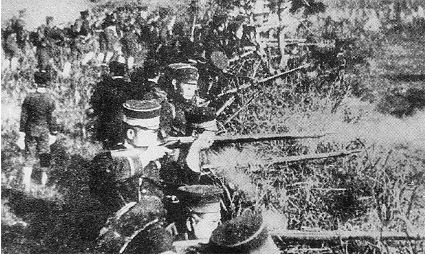
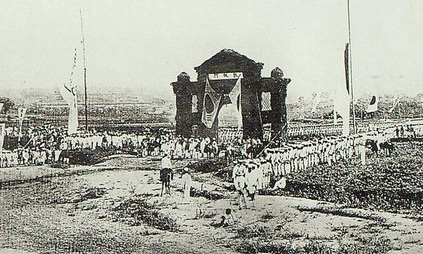
The north and south peasant armies, Gyeonggun, and Japanese army assembled in Ugeumchi,Gongju.
The peasant army (about 20,000) was defeated in the Battle of Ugeumchi.
Retreat from Gomti to Noseong due to a surprise attack by Gyeonggun
Kim Gae-nam's peasant army (about 5,000) was defeated at Gongju after failing to attack Cheongju
After a close battle with the Japanese Army in Noseong and Nonsan, the North and South Peasant Army retreated to Ganggyeong (joined by Kim Gae-nam) and were defeated in Jeonju.
Gyeonggun and Japanese combined forces took control of Jeonju-seong
The peasant army under Jeon Bong-jun was disbanded due to the defeat in Wonpyeong and Taein battles.
The dissolution of the besieged peasant army under Son Hwa-jung and Choi Gyeong-seon
Choi Gyeong-seon, 36, arrested in Hwasun
Jeon Bong-jun (41 years old) arrested at Sunchang Pinori (arrival in Hanyang on December 18)
Kim Gaenam, 42, arrested in Taein, decapitated and his head was exposed in Jeonju
Son Hwa-jung, 34, arrested in Buan
The Jangheung and Gangjin peasant armies were disbanded due to their defeat in the battle of Jangheung Seokdae.
Northern Peasant Army defeated by Gyeonggun at Mugeuk in Chungju (Son Byung-hee evacuated to Hongcheon)
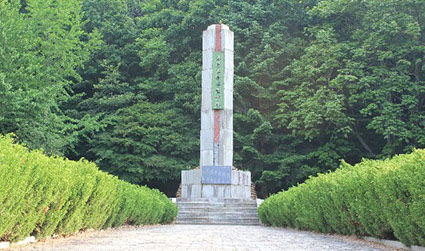
Kim Deok-myeong, 51, arrested in Wonpyeong
The last battle of Daedunsan. The Donghak Peasant Revolution came to an end.
Jeon Bong-jun interrogated five times by the Japanese consul
Jeon Bong-jun, Son Hwa-jung, Kim Deok-myeong, Choi Gyeong-seon, etc. were executed by hanging.
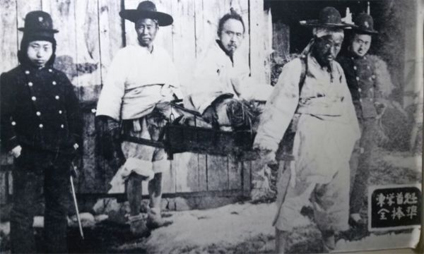
 Please evaluate the satisfaction with the information provided on this page.
Please evaluate the satisfaction with the information provided on this page.